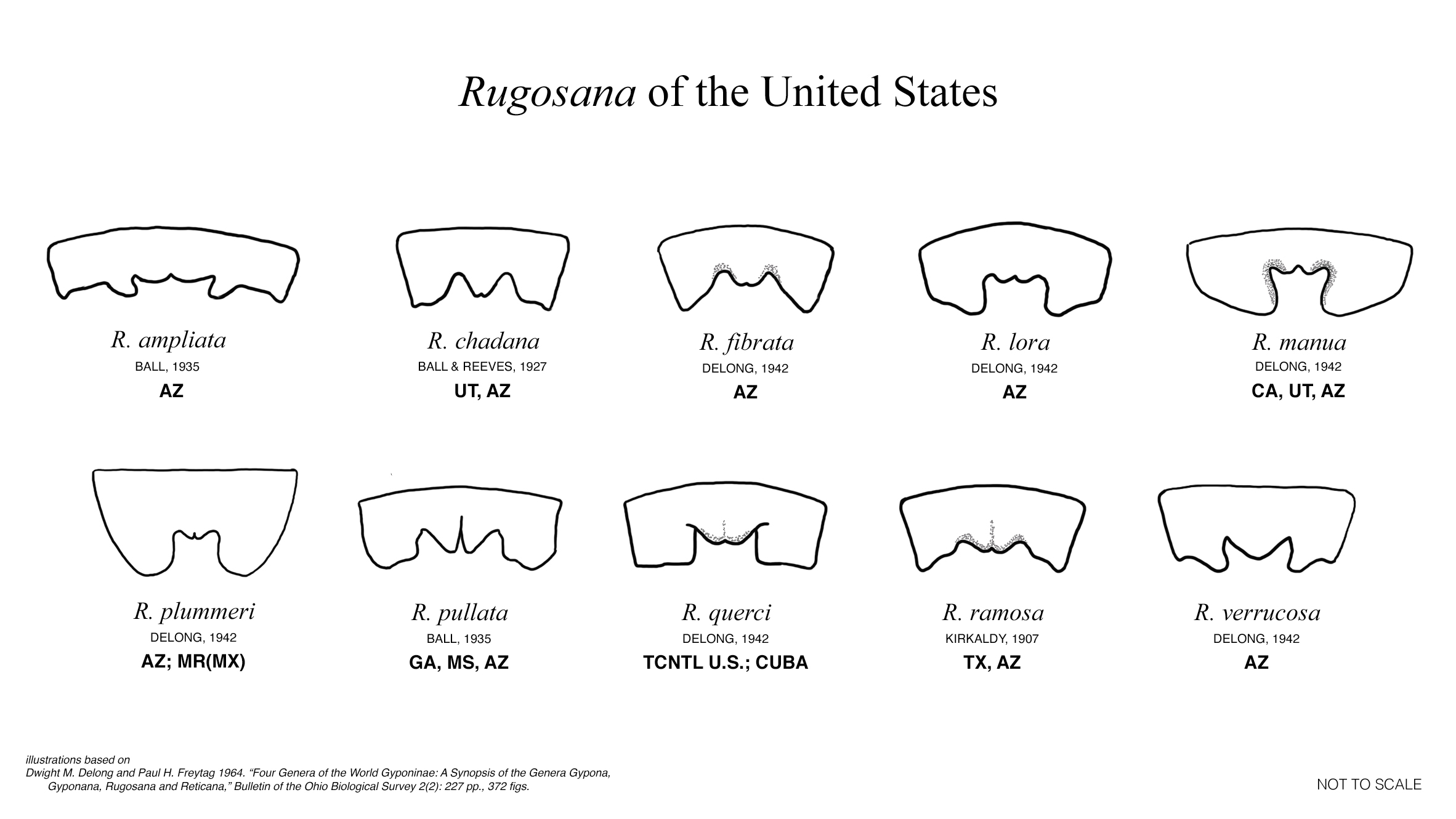The Genus Rugosana: Identification and Ecology
Rugosana is a Gyponine genus that is quite diverse in the southwest and Mexico; primarily nearctic in distribution. These green species are all oak-feeders. They are externally extremely similar to one another, so it is imperative that one obtains clear photos of the underside of a female for species identification. Users often confuse this genus with the large genus Gyponana (perhaps due to the AI's suggestions), but they can be easily differentiated from one another through a number of diagnostic external features.
Rugosana is distinct in having densely reticulate raised wing venation that gives it a mottled and "rough" appearance. These mottled markings are also found on the scutellum and pronotum, compared to the usually linear markings on Gyponana. There is one western species, Gyponana procera which can easily be confused with Rugosana due to the dense wing venation, mottled markings on the pronotum, and unusually dark colouration. However, the dense venation is more net-like instead of mottled. There are also southwestern members of Gyponana which entirely lack markings and have very sparse wing venation—this is a trait entirely distinct from Rugosana.
note the differences between Rugosana and Gyponana cf. procera, with a focus on the wing venation. Also note the genus Hamana which is even more strongly mottled, but usually pale and without raised venation.



Like most leafhoppers, the ecology of Rugosana is poorly known. While the species are oak-feeders, the life histories and distributions of each species require further investigation. Like all genera of Gyponini in the southwest, it is probable that there are undescribed species present.
Identification of this genus is very easy in the eastern United States as there are only two species: Rugosana querci (DeLong, 1942) and Rugosana pullata (Ball, 1935), the latter of which is confined to the extreme southeast and reaches into AZ (and has not yet been photographed as of writing). However, in the southwest and Mexico identification is much more difficult. clear underside views of females are required in order to resolve the form of the female pregenital sternite: a plate near the end of the abdomen that can be seen before the very prominent final segment of the abdomen (the pygofer). Unfortunately, dissection is necessary in order to identify males of this genus. It may turn out that some of the species are morphologically distinct based on external characteristics, but the rarity of photographs of members of this genus which have been identified and my lack of access to images of the types means that I cannot know whether any of the species truly have distinct forms.
See below for graphics I've made detailing the members of the genus. Not all described species south of the U.S. are represented with these pregenital sternite illustrations as the females have not been described for all species.


REFERENCES
Dwight M. Delong and Paul H. Freytag 1964 .“Four Genera of the World Gyponinae: A Synopsis of the Genera Gypona, Gyponana, Rugosana and Reticana,” Bulletin of the Ohio Biological Survey 2(2): 227 pp., 372 figs.
DeLong, Dwight M. 1942. A Monographic Study of the North American Specie of the Subfamily Gyponinae (Homoptera: Cicadellidae) Exclusive of Xerophloea. Ohio State Univ. Press No. 5 Biological Series 187 pp.
Paul H. Freytag 2005. "The Gyponinae of Hispaniola (Hemiptera: Cicadellidae)," Journal of the Kansas Entomological Society 78(4), 322-340.





